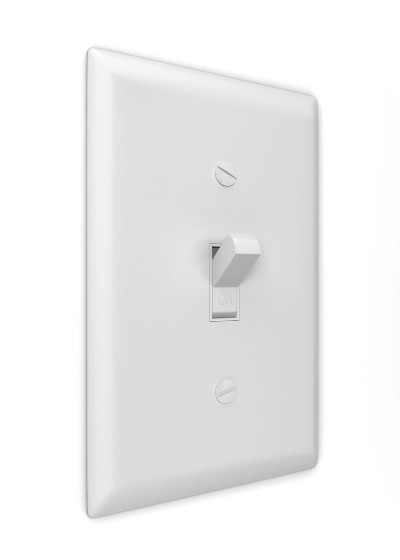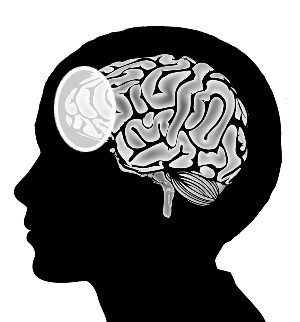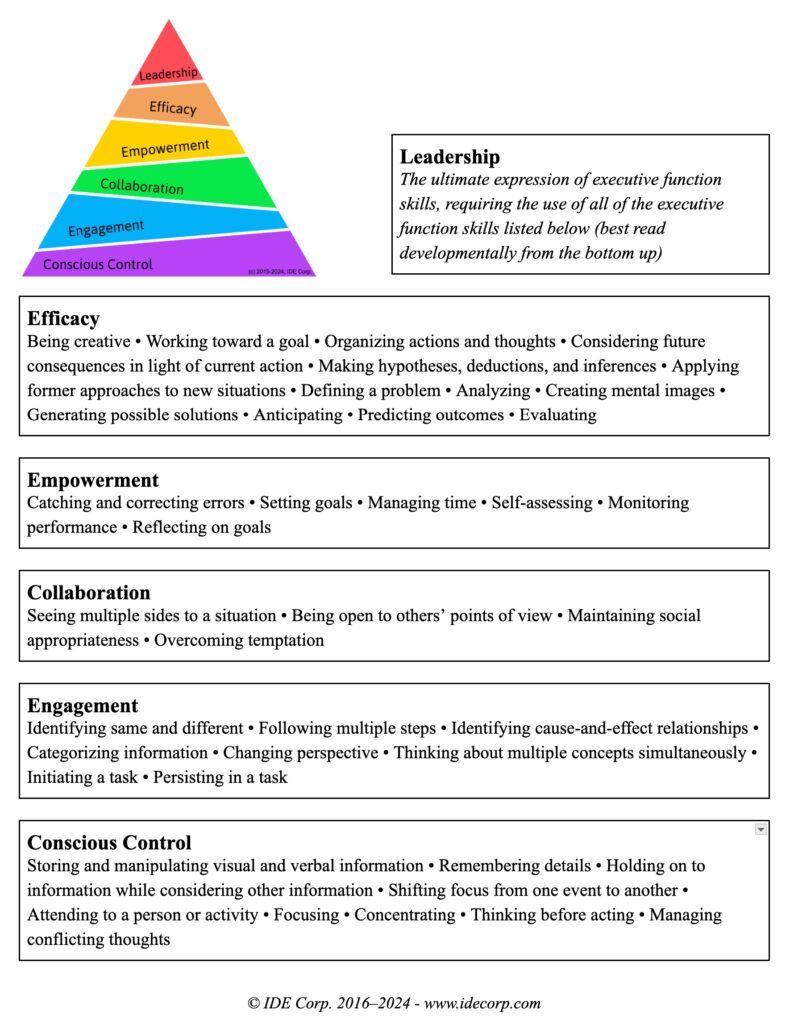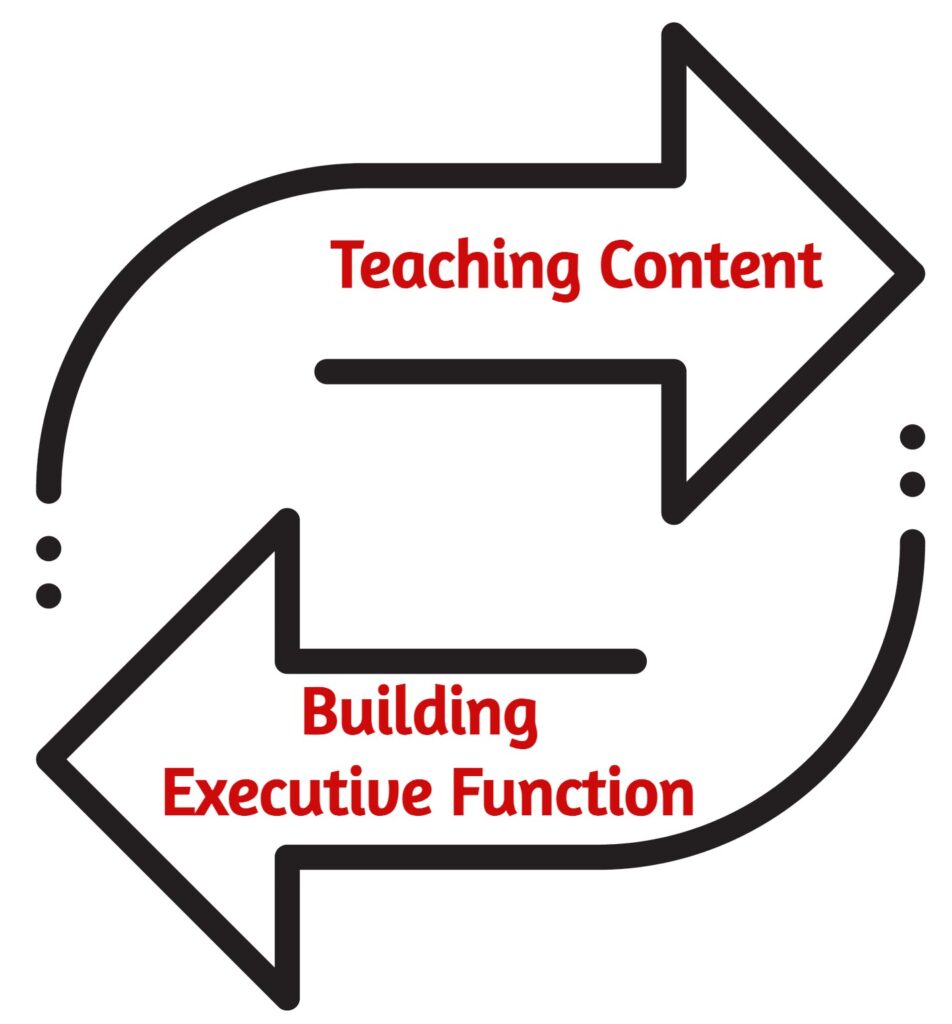Executive Function: A Powerful Light Switch

Imagine if you could flip a switch for students and have them experience academic success, emotional wellness, strong social interactions, and solid behavioral habits. Sounds like an educator’s dream come true! Well, it’s not that far-fetched. Let’s deconstruct it!
Executive Function and Its Role in Life Success
| Academic | The teacher is offering a great lesson. But this student lacks the ability to follow multiple steps, see cause-and-effect relationships, create mental images, or remember details. This student is not learning. |
| Emotional | This student just completed a self-check on the new content the teacher just taught and failed it; as a result, the student is distraught, lacking confidence, feeling hopeless, and very upset. To the teacher, this may seem like an overreaction, but this student lacks the ability to set goals, work toward a goal, manage conflicting thoughts, and apply former approaches to new problems. Therefore, this student does not have the tools to move past the situation easily. |
| Social | This student has difficulty in group situations, usually voicing opinions and bullying others into agreeing. This student loves group work, but talks all the time, interrupts others, and doesn’t listen to their ideas. Other students prefer not to have this student in their groups. This student lacks the ability to monitor performance, overcome temptation, be open to others’ points of view, and think before acting. As a result, this student is avoided by others, in spite of trying to engage with them. |
| Behavioral | This student becomes agitated easily. If someone walks by and brushes against the desk, knocking a paper to the floor, this student becomes aggressive. The teacher continually reminds the student to sit down and get back to work, but the student finds opportunities to act out in order to gain attention. This student lacks the ability to concentrate, think before acting, consider future consequences in light of current action, and manage conflicting thoughts. As a result, this student gets very little done in class and distracts others. |
The Prefrontal Cortex: A Powerful Part of Your Brain
The italicized phrases above are just some of the 40 key executive function skills. These skills are managed mostly by the prefrontal cortex of the brain (right behind your forehead). They emerge in students as this part of the brain develops. Thus, executive function is a physiological phenomenon. Just as you wouldn’t ask a student with a broken arm to reach for something and “try harder,” you shouldn’t push students to try harder when they may lack the means to do just that! That means:

| Academic | No matter how much you try to explain the academic skill to the student who lacks executive function, this student will not succeed until you build the necessary executive function skills. |
| Emotional | No matter how much you try to console this student and explain that this is just a bump in the road the student can overcome, this student will not be consoled until you build the necessary executive function skills. |
| Social | No matter how much you try to correct the student, this student will not engage appropriately in social situations until you build the necessary skills of executive function. |
| Behavioral | No matter how comprehensive a PBIS plan you have in place, it may not produce the results you desire until you build the necessary skills of executive function. |
Think of executive function as fueling all of your other goals for students. Here are 40 key executive function skills mapped to life skills that will support student success in school and beyond, from my book Building Executive Function: The Missing Link to Student Achievement.
40 Key Executive Function Skills Categorized by Life Skills

Building Executive Function While Teaching Content
You don’t need to take time away from content to build executive function. You definitely don’t want to have an executive function day, hour, or class! Executive function is best addressed continually, throughout the course of the day’s academic and non-academic activities. Structures and strategies are both powerful for accomplishing this.

Examples of Structures That Build Executive Function Skills
Take a look at the 40 key executive function skills listed above and consider the following:
The teacher hands a paper to a student, perhaps a direction sheet for setting up a notebook or a how-to sheet for specific skill practice. How many of the 40 executive function skills do you need/build to take that paper from the teacher? I count about 7 or 8. Now introduce the structure of a resource table or area. When students are engaged in an activity and need materials, they go retrieve them for themselves. That means they first have to realize they need a resource; then they have to go to the resource table or area; then they have to scan the resources to locate what they need; and then they need to return to their seat. Okay, now how many executive function skills do you need/build? I count at least 14.
When a teacher has a limited resource, such as a learning center, microscope setup, manipulatives, etc., and calls over a couple of students at a time, how many executive function skills does the student need/build? Alternatively, if the teacher set up a sign-up sheet and allowed students to pick a time and show up at the appointed time, the student will need/build many more executive function skills.
When students raise their hands to get the teacher’s attention and help, they need/build few executive function skills. When they have to first check the resource table, then look at the peer expert board, and finally, if they have not found the help they need, place their name on the help board and continue working on something else . . . need I say more?
Those are three examples of structures that can easily be put into place in the classroom. Graphic organizers, direction sheets, how-to sheets, and group protocols are powerful structures that belong in every classroom. You can implement structures that will build students’ executive function skills throughout the day.
Examples of Facilitation Strategies That Build Executive Function Skills
When students are working and you, as the teacher, facilitate learning, what kinds of questions do you ask? Too many teachers ask if students need help; but what if students don’t know what they don’t know? That’s why I say to pull up a chair, observe the students, and start a conversation. Consider the kinds of questions that will build executive function skills:
- – What caused that to happen? Identifying cause-and-effect relationships
- – Picture yourself sitting in ____________; what do you see and hear? Creating mental images
- – Show me the steps you took to arrive at your answer. Following multiple steps
- – What if ____________? Predicting outcomes
- – Did that take more or less time than you thought it would? Managing time
- – How did you manage to push through when you were having difficulty figuring it out? Persisting in a task
- – What is the challenge this character is facing? Defining a problem
I could go on, but you get the point. If you keep those 40 executive function skills nearby, you’ll be surprised at how many questions you can ask to build executive function skills. The more you do, the better you will find students’ academic performance, social interactions, emotional wellness, and behavioral self-management.
Build Your Skills in Building Executive Function
Looking for support in building executive function?
IDE Corp. provides on-site and remote workshops and consulting in this area for teachers and leaders. Contact solutions@idecorp.com
EdQuiddity Inc offers online, on-demand Professional Learning Experiences with resources. Schools enroll all teachers and administrators and use them in faculty meetings, PD days, PLCs, teacher observation post-conferences, and more.
EdQuiddity Inc offers consultant-facilitated, online Virtual Learning Communities on executive function. Engage when it’s convenient for you; connect with educators from other schools and districts; work with a consultant for discussions and feedback.
